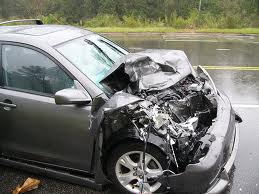
 According to a new study conducted by the Texas Transportation Institute, it is no safer to send text messages using a voice-to-text app while driving than it is to sent text message manually. Wireless providers created hands-free texting apps to lessen the effects of manual texting behind the wheel, and drivers involved in the latest study reported feeling safer when using a voice-to-text app compared to texting manually. Unfortunately, mounting research suggests that hands-free texting is just as dangerous as texting manually while driving, slowing driver reaction time and increasing the risk of an accident. If you have sustained car accident injuries in Tennessee because of a distracted driver, consult our qualified lawyers at Michael D. Ponce & Associates today. You may have grounds to file a personal injury lawsuit against the allegedly negligent driver, in order to pursue financial compensation for your losses.
According to a new study conducted by the Texas Transportation Institute, it is no safer to send text messages using a voice-to-text app while driving than it is to sent text message manually. Wireless providers created hands-free texting apps to lessen the effects of manual texting behind the wheel, and drivers involved in the latest study reported feeling safer when using a voice-to-text app compared to texting manually. Unfortunately, mounting research suggests that hands-free texting is just as dangerous as texting manually while driving, slowing driver reaction time and increasing the risk of an accident. If you have sustained car accident injuries in Tennessee because of a distracted driver, consult our qualified lawyers at Michael D. Ponce & Associates today. You may have grounds to file a personal injury lawsuit against the allegedly negligent driver, in order to pursue financial compensation for your losses.
In the study, researchers tested the response times of 43 licensed drivers between the ages of 16 and 60, each of whom operated a 2009 Ford Explorer on a closed course. Each study participant drove four times for roughly 10 minutes at 30 mph – while not texting at all, while texting manually, while texting with the iPhone’s voice-to-text app, and while texting with an Android smartphone’s voice-to-text app. According to the findings, driver response times were slower no matter what method of texting was used, which combats the notion that hands-free texting is a safer method of texting while driving. The researchers reported that the drivers involved in the study took about twice as long to react behind the wheel while texting compared to not texting, and spent less time looking at the road regardless what method of texting was used.
During the course of the study, each driver completed five text messaging tasks – sending a message, receiving one, reading and replying to three, and simply reading one. The texts included short messages from a script, including “hey, what are you doing tonight,” according to Christine Yager, associate transportation researcher at the Texas Transportation Institute. “They would get a reply, and follow up, “yes, where do you want to meet?” An interesting finding of the study was that driver performance was roughly the same with both manual and hands-free texting, even though manual texting actually required slightly less time than using a voice-to-text app.
According to the new report, text messaging has grown exponentially over the past ten years, from an average of 31 million messages sent per day in 2002, to a whopping 6.1 billion per day in 2012. Unfortunately, researchers believe that this dramatic increase in text messaging has triggered an increase in the rate of accidents, injuries and fatalities caused by distracted drivers. In 2011 alone, 3,331 people were killed and 387,000 were injured in distracted-driving accidents in the United States, the Transportation Department reports. In 2010, 18% of all injury accidents in the U.S. involved a distracted driver. If you have suffered injuries in a Tennessee car accident that you believe was caused by a distracted driver, contact our reputable attorneys at Michael D. Ponce & Associates for legal help.
Source: http://www.usatoday.com/story/news/nation/2013/04/23/hands-free-texting-driving/2103105/